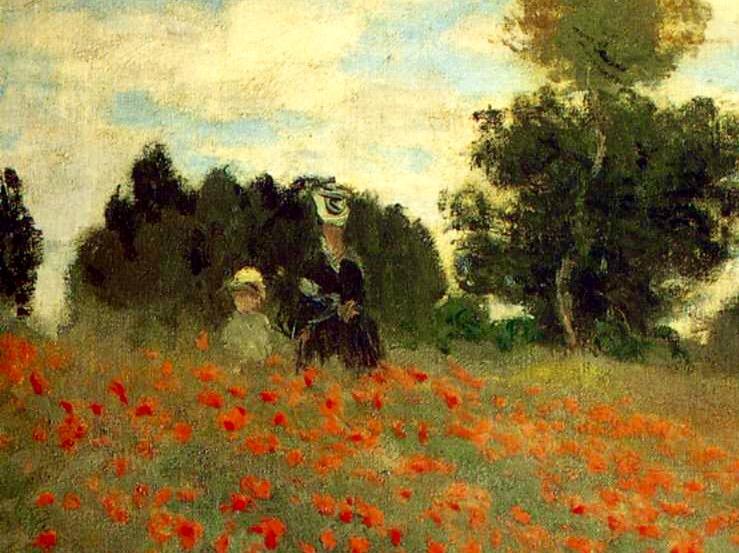
Poppies by Claude Monet. 3 puzzles of the picture.
Contents:
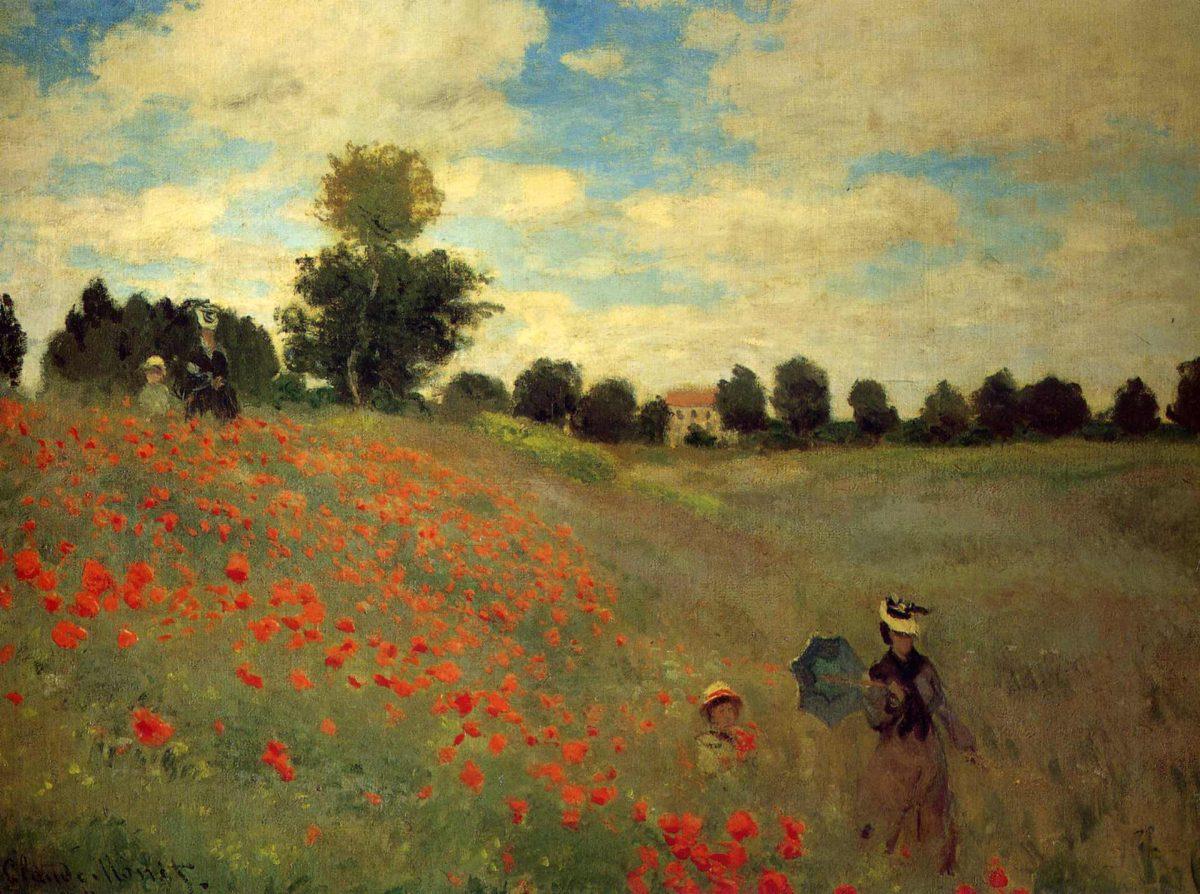
"Poppies" (1873), one of the most famous works of Claude Monet, I saw in Musée d'Orsay. However, at the time, she didn't look at it properly. I have as a fan impressionism, eyes just ran up from all those masterpieces that are in this museum!
Later, of course, I have already considered the "Maki" properly. And I found that in the museum I didn’t even notice a few interesting details. If you look at the picture more closely, you will probably have at least three questions:
- Why are poppies so big?
- Why did Monet depict two almost identical pairs of figures?
- Why did the artist not draw the sky in the picture?
I will answer these questions in order.
1. Why are poppies so big?
Poppies are shown very large. Most of them are the size of the head of the depicted child. And if you take poppies from the background and bring them closer to the figures in the foreground, then they will be even larger than the head of both the child and the depicted woman. Why is it so unrealistic?
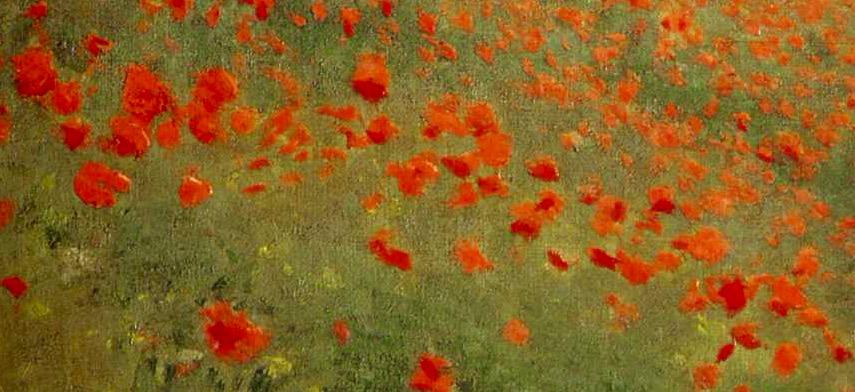
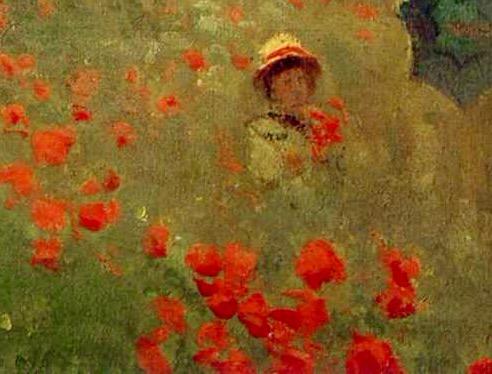
In my opinion, Monet deliberately increased the size of the poppies: this is how he once again preferred to convey a vivid visual impression, rather than the realism of the depicted objects.
Here, by the way, one can draw a parallel with his technique of depicting water lilies in his later works.
For clarity, look at fragments of paintings with water lilies from different years (1899-1926). The top work is the earliest (1899), the bottom is the latest (1926). Obviously, over time, water lilies became more and more abstract and less detailed.
Apparently "Poppies" - this is just a harbinger of the predominance of abstract art in the later paintings of Monet.
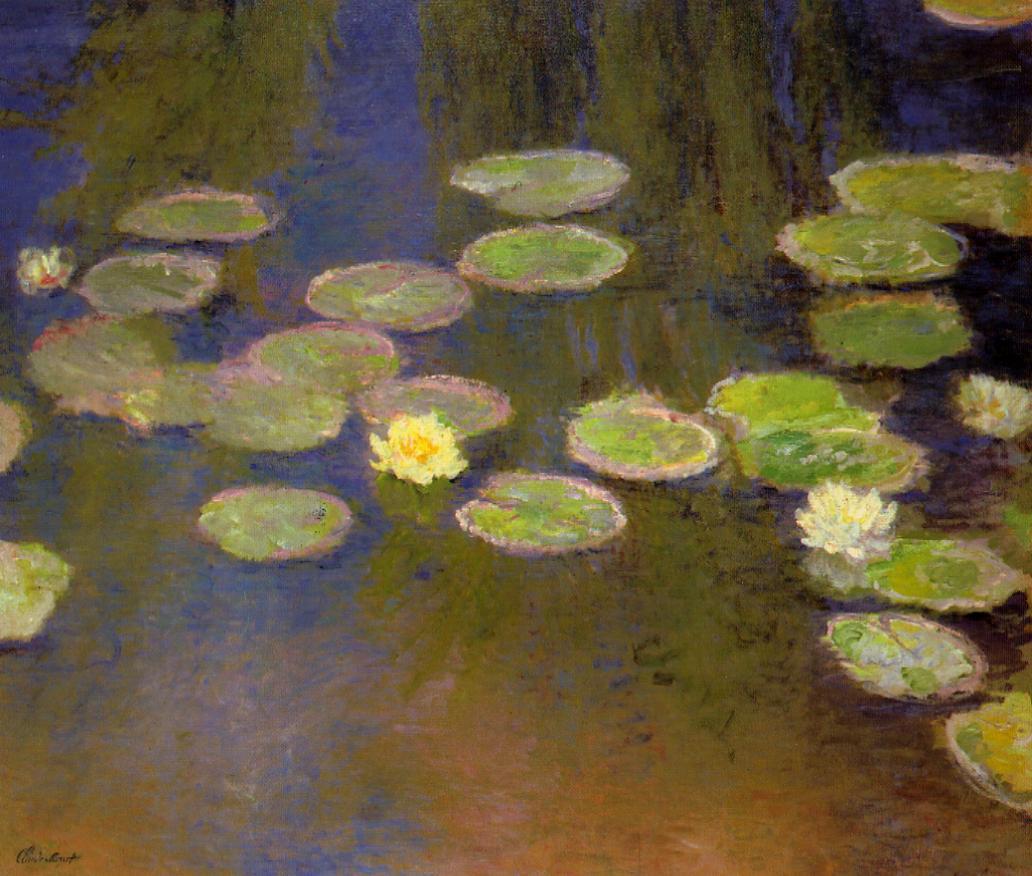
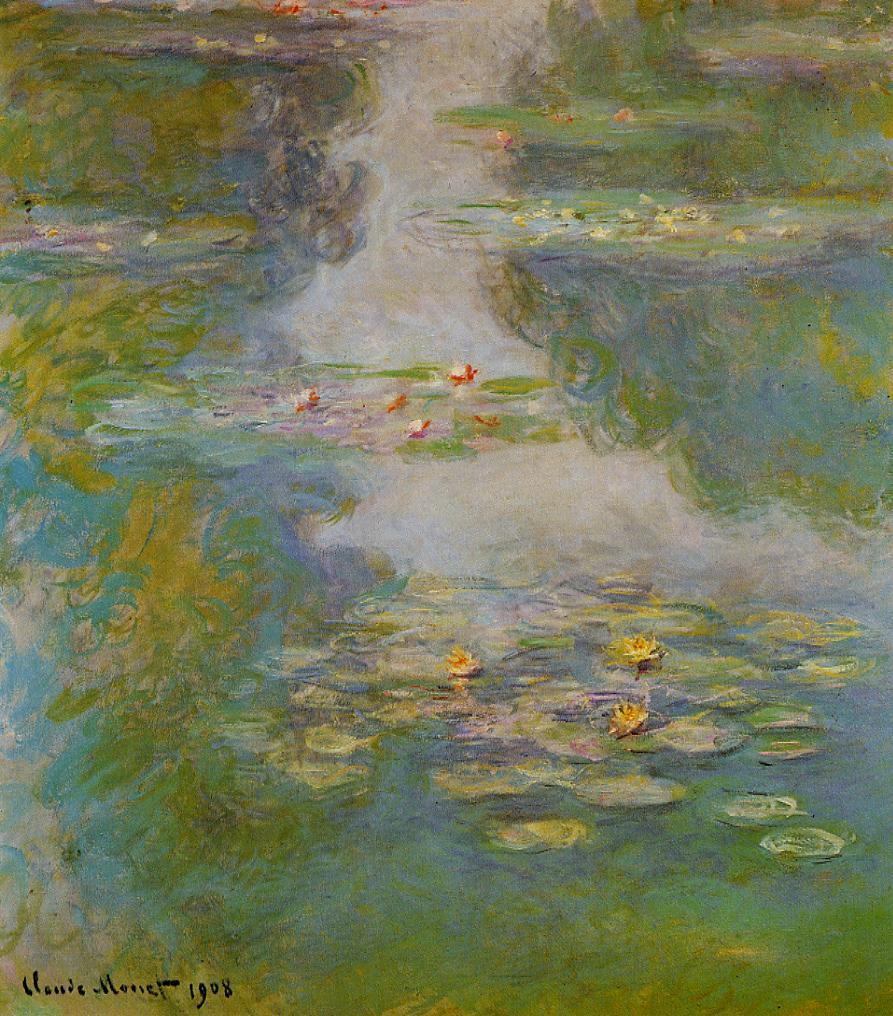
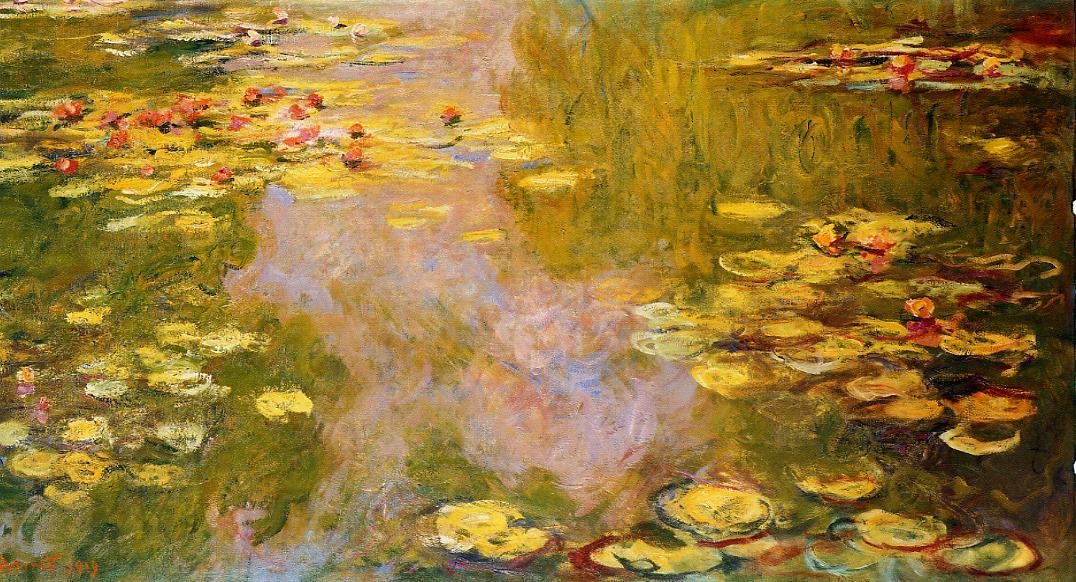
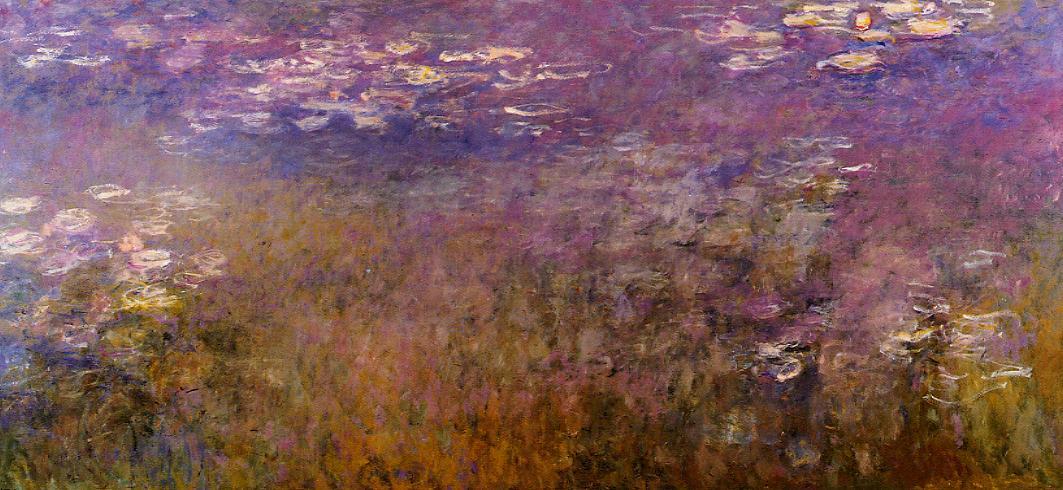
Paintings by Claude Monet. 1. Top left: Water lilies. 1899 d. Private collection. 2. Top right: Water lilies. 1908 d. Private collection. 3. In the middle: A pond with water lilies. 1919 Metropolitan Museum of Art, New York. 4. Bottom: Lilies. 1926 Nelson-Atkins Museum of Art, Kansas City.
2. Why are there two pairs of identical figures in the picture?
It turns out that it was also important for Monet to show movement in his painting. He achieved this in an unusual way, depicting a barely visible path on a hill among flowers, as if trodden between two pairs of figures.
At the bottom of a hill with poppies, his wife Camille and son Jean are depicted. Camilla is traditionally depicted with a green umbrella, just like in the painting “Woman with an umbrella”.
Upstairs on a hillock is another couple of a woman and a child, for whom Camilla and her son most likely also posed. Therefore, the two pairs are so similar.
Read about this in the article “What is so mysterious about Monet’s painting “Poppies”.
site “Painting nearby: about paintings and museums is easy and exciting”.
» data-medium-file=»https://i1.wp.com/www.arts-dnevnik.ru/wp-content/uploads/2015/11/image10.jpeg?fit=595%2C445&ssl=1″ data-large-file=»https://i1.wp.com/www.arts-dnevnik.ru/wp-content/uploads/2015/11/image10.jpeg?fit=739%2C553&ssl=1″ loading=»lazy» class=»wp-image-379 size-full» title=»Маки Клода Моне. 3 загадки картины.»Маки»» src=»https://i0.wp.com/arts-dnevnik.ru/wp-content/uploads/2015/11/image10.jpeg?resize=739%2C553″ alt=»Маки Клода Моне. 3 загадки картины.» width=»739″ height=»553″ sizes=»(max-width: 739px) 100vw, 739px» data-recalc-dims=»1″/>
This pair of figures on a hill is depicted, perhaps solely for the visual effect of movement, which Monet so aspired to.

3. Why didn't Monet paint the sky?
Another notable moment in picture: Notice how badly the sky is drawn down to the bare areas of the canvas left.
Read about this in the article “What is unusual in Monet’s painting “Poppies”.
site “Painting is nearby: in each picture there is history, fate, mystery”.
» data-medium-file=»https://i0.wp.com/www.arts-dnevnik.ru/wp-content/uploads/2015/11/image11.jpeg?fit=595%2C443&ssl=1″ data-large-file=»https://i0.wp.com/www.arts-dnevnik.ru/wp-content/uploads/2015/11/image11.jpeg?fit=900%2C670&ssl=1″ loading=»lazy» class=»wp-image-384 size-full» title=»Маки Клода Моне. 3 загадки картины.»Маки»» src=»https://i1.wp.com/arts-dnevnik.ru/wp-content/uploads/2015/11/image11.jpeg?resize=900%2C670″ alt=»Маки Клода Моне. 3 загадки картины.» width=»900″ height=»670″ sizes=»(max-width: 900px) 100vw, 900px» data-recalc-dims=»1″/>
I can assume that the point is in the very technique of impressionism: Monet painted pictures in a matter of hours and even minutes to depict the play of light and colors at a certain moment of the day. Therefore, there was not always enough time for all the elements of the landscape. Working out all the details is the lot of studio work, not outdoor work.
By the way, the painting "Poppies" was also exhibited at the first exhibition of the Impressionists in 1874, which I wrote about in more detail in the article. Monet's "Impression" as the Birth of Impressionism in Painting".
***
Comments other readers see below. They are often a good addition to an article. You can also share your opinion about the painting and the artist, as well as ask the author a question.
Leave a Reply